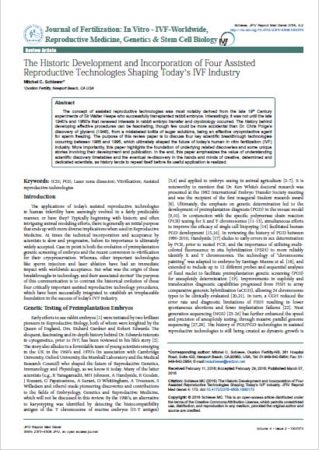The concept of assisted reproductive technologies was most notably derived from the late 19th Century experiments of Sir Walter Heape who successfully transplanted rabbit embryos. Interestingly, it was not until the late 1940’s and 1950’s that renewed interests in rabbit embryo transfer and cryobiology occurred. The history behind developing effective procedures can be fascinating, though few could be more accidental than Dr. Chris Polge’s discovery of glycerol (1948), from a mislabeled bottle of sugar solutions, being an effective cryoprotective agent for sperm freezing. The purpose of this review paper is to discuss four key scientific breakthrough technologies occurring between 1985 and 1995, which ultimately shaped the future of today’s human in vitro fertilization (IVF) industry. More importantly, this paper highlights the foundation of underlying related discoveries and some unique stories involving their development and publication. In the end, this paper emphasizes the value of understanding scientific discovery timetables and the eventual re-discovery in the hands and minds of creative, determined and dedicated scientists, as history tends to repeat itself before its useful application is realized.
Mitchel C. Schiewe PhD*
Received February 11, 2016; Accepted February 29, 2016; Published March 07, 2016
Citation: Schiewe MC (2016) The Historic Development and Incorporation of Four Assisted Reproductive Technologies Shaping Today’s IVF Industry. JFIV Reprod Med Genet 4:173. doi:10.4172/2375- 4508.1000173
